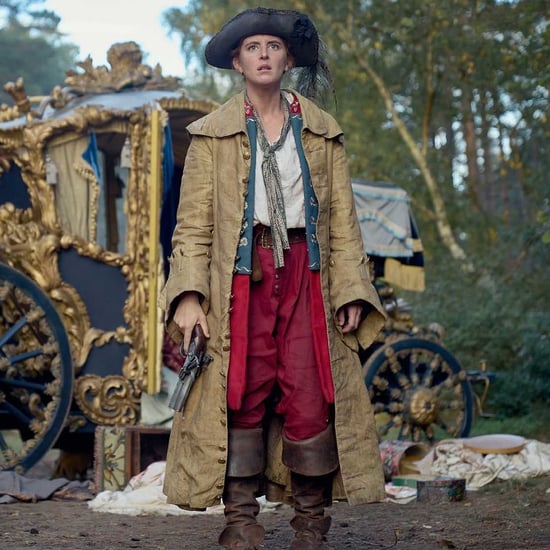Netflix's Stateless True Story of Cornelia Rau
What You Need to Know About the Shocking True Story Behind Netflix's Stateless

With executive producer Cate Blanchett at its helm, the Netflix series Stateless takes a look at the harsh conditions at Australian immigration detention centres. The show follows four characters as they navigate a centre located in a remote desert location. One of the key threads of the series is that of Yvonne Strahovski, who portrays Sofie Werner, a flight attendant escaping a cult. Stateless is based on a true story — Werner's real-life counterpart is Cornelia Rau, a German-born Australian resident who made headlines after being unlawfully detained at an immigration detention centre. Rau's experience brought attention to Australia's treatment of, as the show title suggests, the stateless. Here's what you need to know about her story before checking out the series.
What Was Cornelia Rau's Backstory?
Born in Germany, Rau headed to Australia with her family at a young age and grew up in Sydney. She eventually received a diploma in leisure and recreation, then began working as a flight attendant in 1993. Her troubles took a turn when she joined the controversial sect Kenja in 1998. According to parliamentarian Stephen Mutch, recruits were required to tell their darkest secrets to the group, then were blackmailed if they left. Former members have explained that leaders (two of whom are portrayed by Blanchett and Dominic West in Stateless) forced followers to sever links with family and give sizable parts of their income to the cult. Rau spent five months there, much to her family's concern.
How Did Rau End Up at a Detention Centre?
The years following her involvement with Kenja, Rau struggled with her mental health. Spending time in and out of hospitals, she was diagnosed with bipolar disorder, then later schizophrenia. In March 2004, Rau snuck out of the psychiatric wing of Manly Hospital and disappeared. Days after she left, the Queensland police apprehended her. She told them her name was Anna and that she was coming from Germany, presenting a stolen Norwegian passport. Later on, Rau said she didn't give her real identity due to her fear of the Kenja sect.
By April, Rau was incarcerated at the Brisbane Women's Correctional Centre. Officials had no idea who she was but also didn't consider the fact that she could have been Australian. They assumed she was a lost German citizen. At one point, they even put Rau in separate confinement for her behaviour — she paced, wouldn't wash, and compulsively hoarded her food, among other things. It was important to note that she had gone months without her schizophrenia medication. In August, a psychiatrist finally diagnosed her with a psychotic disorder, then sent her to a hospital. The government continued suspecting that she was unlawfully in Australia despite having no concrete evidence about her case.
In October 2004, Rau was transferred to the Baxter Immigration Detention Centre. There, she resided alongside many asylum seekers, including Iranians, Afghans, and Iraqis who had spent many years there after their refugee claims failed. Mental health experts there believed Rau had a personality disorder but said she wasn't mentally ill. Instead of giving her treatment, the centre put her in Red One, a compound where she was only allowed four hours out of her cell each day. In January 2005, The Age published a story about her, calling her a mystery woman who may be ill. Her family immediately recognised her and called for her release. Years down the line, Rau received $2.6 million in compensation for wrongful detainment.
Who Else Stayed at Baxter?
Upon her release, Rau made headlines, possibly, as some have pointed out, because she was white. Currently, there are around 1,450 people locked up in immigration detention centres on the Australian mainland. The average length of stay at one is about 500 days, though some remain detained for years. Stateless people, those not belonging to any nation, may have indefinite stays. Over the years, conditions at these centres have worsened, becoming more like prisons, according to the Australian Human Rights Commission.
This was true for many of Rau's fellow detainees at Baxter. In 2004, three Iranian asylum seekers at Baxter staged a protest by climbing onto the roof of the gym. Others joined a hunger strike or sewed their lips together. Shortly after Rau left, another protest broke out at Baxter, this time from the outside. The detention centre eventually closed down, but refugee advocates have remained wary about other centres in Australia.
Stateless premieres on Netflix on July 8.






